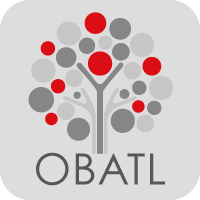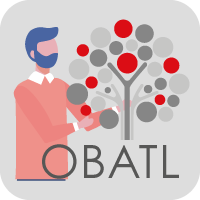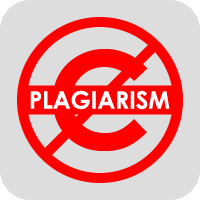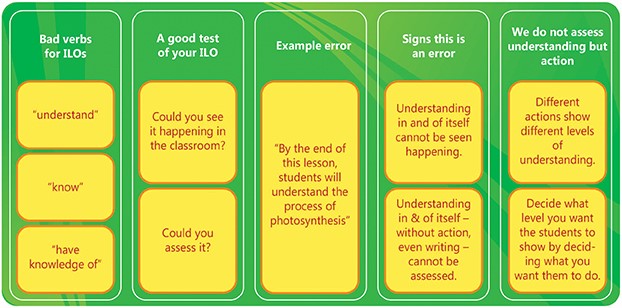Learning Design (Curriculum)
Learning Design (Curriculum)
OVERVIEW
The main area of focus of the Learning Design area of work relates to delivering Curriculum in an engaging, personalized and digitally enriched context of a Liberal Arts Education.
For Staff |
|||
 |
 |
 |
 |
 |
 |
||
| Blended Learning Policy and Guidelines | |||
For Students |
|||
 |
|||
| Student Blended Learning Ambassadors |
|||
PRINCIPLES
This approach to Learning Design reflects the following five principles;
- Learner experience is the foundation and the stimulus for all learning
- Learners learn best when they are actively and interactively engaged
- Learning activities and assessment are authentic in the sense of reflecting work place activities graduates will engage in
- There is close alignment between intended learning outcomes, learning activities and assessment of actual learning outcomes
- Learning activity design drives choices about the technology to support that activity
OBJECTIVES
The objectives of this approach to Learning Design are to:
- advance the design, development and implementation of Blended Learning curriculum
- implement related assessment and curriculum resources to facilitate academics to embed outcome-based approach to teaching and learning (OBATL) approaches within the curriculum
- enhance students’ flexible learning opportunities via curriculum and blended learning
- implement a comprehensive curriculum approach to support the alignment and embedding of graduate attributes
- develop a community of practice that allows the student voice to be heard in relation to curriculum and blended learning
This section covers:
- A definition of constructive alignment
- General Information regarding learning outcomes
- Anatomy of a learning outcome
- Structure of a learning outcome
- How do I use learning outcomes to design a learning ecperience such as a course?
- General Considerations
- Resources / Further Reading
A definition of constructive alignment
Biggs (2003: 27) defines constructive alignment as:
The ‘constructive’ aspect refers to what the learner does, which is to construct meaning through relevant learning activities. The ‘alignment’ aspect refers to what the teacher does, which is to set up a learning environment that supports the learning activities appropriate to achieving the desired learning outcomes.
The key is that the components in the teaching system, especially the teaching methods used and the assessment tasks are aligned to the learning activities assumed in the intended outcomes. The learner is ‘trapped’, and cannot escape without learning what is intended.
(reference - https://sydney.edu.au/education_social_work/groupwork/docs/ConstructiveAlignment.pdf )
General Information regarding learning outcomes
Intended Learning Outcomes (ILOs) are single - sentence statements that clearly articulate the key elements of what students are expected to know, understand, and/or be able to do on successful completion of their studies for a defined period of learning, at a specified level (e.g. course, programme, project, unit).
Anatomy of a learning outcome
Each learning outcome statement answers 3 questions about the student’s experience:
Do what? (verb)
With what? (content)
For what? (this is what you will assess)
Structure of a learning outcome
How do I use learning outcomes to design a learning experience such as a course?
The following three questions are typical of “backward design,” where you determine the outcome, then
the assessment and then the learning activities:
-
What will students learn? learning outcomes
-
How will outcomes be measured? appropriate assessments
-
What will students do to achieve these outcomes? appropriate learning activities to develop the required knowledge, skills or attitudes.
General Considerations
- Where courses are “clustered” (eg Economics I…. Economics IV) it should be clear how the course and its LOs/Assessment components differ and how the difference in the QF Levels reflect these outcomes.
- LOs needs to be more specific and measurable - and align to the appropriate QF level / GLD indicated on the syllabus
- “Continuous Assessment” component within courses should be clear regarding how this will be assessed and manageable within student workload
- LOs of these Continuous Assessments should usually be different to the Courses’ LOs.
- The Learning Outcomes should not describe the course content, but rather define what the student will learn
- The assessment criteria should be different to the Learning Outcomes
- There should be clear evidence of progression between the courses at different QF levels
- There should be clear evidence of constructive alignment between learning outcomes, the
learning activities and the assessment tasks and criteria - Learning resources should be current (can include old references IF they are definitive texts)
- The degree of the action students take? Depth and Breath should be clear
- Avoid the use of the verb “Understand” in LO’s
Resources / Further Reading
- From the Higher Education Academy in the UK
https://www.heacademy.ac.uk/system/files/resources/id477_aligning_teaching_for_
constructing_learning.pdf (Best short and sweet overview of constructive alignment) - From HKQF - Generic Level Descriptors - Practical Guide for Operators of Learning Programmes
https://www.hkqf.gov.hk/filemanager/en/content_13/Practical%20Guide%20for%20Operators_
Eng_April_2018.pdf - From HKQF - Generic Level Descriptors - (2018 Revised Edition)
NOTE – alignment here to Performing Arts Domain needs work
https://www.hkqf.gov.hk/filemanager/en/content_13/The%20revised%20GLD%20and%20the%20
Explanatory%20Notes_Eng_April_2018.pdf - From Shue Yan University HK
https://www.hksyu.edu/qa/HKSYU%20OBTL%20Handbook%2029.10.12.pdf - This is from the Uni of Nottingham - but not sure how long ago...thought the checklist and
prompts quite helpful:
https://www.nottingham.ac.uk/teaching/documents/guidance/lo-guidance.pdf - From Uni of Newcastle:
https://www.ncl.ac.uk/ltds/assets/documents/res-writinglearningoutcomes.pdf - From Open Univ (UK) - lengthy and extensive - something for the future maybe:
http://www.open.ac.uk/cobe/booklets/using_learning_outcomes.pdf - THE BIG PICTURE HKCAAVQ - Evidence Guide For Academic Accreditation Version 1.0 | April2018
https://www.hkcaavq.edu.hk/files/review-of-standards/revised-accreditation-standards/Evidence_Guide_Academic_
Accreditation_v1.0_20180406.pdf
Online OBE Self-Paced Couse for Staff (Link to), for now just write (Coming Soon)
Outcomes-Based Approaches to Teaching and Learning
Lingnan University Course Syllabus
Bloom’s Digital Taxonomy [external link]
Assessment Toolkit (Coming soon)
OBE Health Check
General Enquiries
 |
Phone: (852) 2616-7117 |
 |
E-mail: [email protected] |
 |
2/F, B Y Lam Building, |
 |




